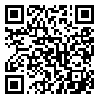BibTeX | RIS | EndNote | Medlars | ProCite | Reference Manager | RefWorks
Send citation to:
URL: http://hayat.tums.ac.ir/article-1-1196-en.html
2- Epidemiology and Reproductive Health Group, Reproductive Epidemiology Research Center, Royan Institute, ACECR, Tehran
3- Dept. of Biostatistics, Faculty of Medical Sciences, Tarbiat Modares University, Tehran
4- Dept. of Midwifery, School of Nursing and Midwifery, Shahrekord University of Medical Sciences, Shahrekord ,
Background & Aim: One of the assisted reproductive technologies is the use of donated oocyte. Although, the data about medical aspects of this process is available, knowledge of the psychological aspect related to this therapy is limited. Each individual's psychological aspects can be assessed by the self-concept and the self-discrepancy. Therefore, the present study aimed to assess the self-concept and self-discrepancy among women receiving and donating oocyte.
Methods & Materials: In this descriptive-analytical investigation, carried out in 2015, given the limited research population, 53 women referred to Royan infertility institute, were investigated in each of the donor and recipient groups using the available sampling method. The data were collected by three questionnaires including demographic questions, Rogers’s self-concept scale and self discrepancy scale (ideal-self discrepancy and ought-self discrepancy). The data were analyzed through the descriptive statistics, Chi-square and t-test using SPSS v.16.
Results: Results showed that the self-concept and self-discrepancy scores were poor in both the donor group and the recipient group. Scores of the recipient women (the questionnaire was reverse scored) were more than scores of the donor women. There was no significant difference between the two groups in the mean scores of self-concept (P=0.53). There was a significant difference between the two groups in the ought-self discrepancy score (P=0.02) but no significant difference was found between the two groups in the ideal-self discrepancy score (P=0.15).
Conclusion: According to the results, it should be noted that in the process of oocyte donation, only physical assessment is not enough but individuals’ psychological needs are necessary to be taken into account. So, the authorities should consider measures to assess the psychological aspects of women receiving and donating oocyte.
| Rights and permissions | |
 |
This work is licensed under a Creative Commons Attribution-NonCommercial 4.0 International License. |





